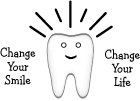Does Your Filling Need Replacing?
There is no perfect substitute for a natural, healthy tooth. A tooth that has decay will need treatment with a dental filling or other restoration depending on the extent of the decay.
A dental filling may last many years before it needs replacing. However, fillings are subject to constant stress from chewing. Clenching or grinding teeth also puts tremendous force on fillings and tooth enamel. All of these can cause a filling to gradually wear away, chip, crack or fall out.
A filling may eventually wear around the edges. Or it may pull away from surrounding tooth enamel, leaving a very small space between the tooth and the filling. This condition may allow bacteria to enter and cause decay around the margins (edges) of the filling. The bacteria cannot be removed once they enter the space. Often, the damage is not seen because there are no symptoms until the decay reaches the nerve of the tooth.
Poor oral hygiene, a poor diet, gum recession or a lack of saliva can contribute to tooth decay. If recurring tooth decay is not treated early, it can progress from the enamel to the dental pulp, the tooth’s living core.
Regular dental examinations are important because problems with existing fillings generally can be detected in the early stage. During your checkup, your dentist can determine whether existing fillings are intact, or if any have cracked or worn away. Worn away fillings should be replaced promptly. Don’t wait until the tooth hurts or the filling and the tooth crack. This can complicate treatment and make it more costly.
If extensive tooth decay develops around an existing filling, little tooth structure may be left once decay is removed. Your dentist may need to restore the tooth with a crown instead of another filling.
Keep your teeth and gums in good health with regular dental visits and professional teeth cleanings. Look for products that have the American Dental Association Seal of Acceptance, an assurance that they meet the ADA’s criteria for safety and effectiveness for their intended use. Brush twice a day with fluoride toothpaste and clean between teeth once a day with floss or another interdental cleaner. This helps remove decay-causing bacteria that toothbrush bristles can’t reach.

